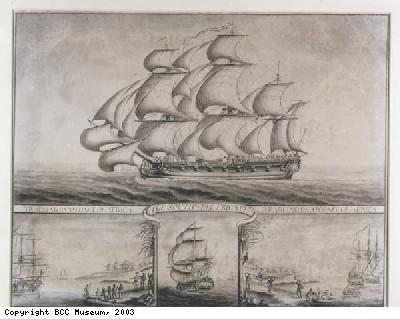How Slavery Developed
Bristol ships go to Africa
Bristol slaving ships ranged in size from 27 tons to 420 tons. The round trip from England to the west coast of Africa across the Atlantic Ocean to the Caribbean and America took about 12 months. Conditions on board ship were hard and dangerous for the crew as well as inhuman for the slaves. Captains of the slave ships had a reputation for cruelty and both crew and African slaves suffered.
Owners of ships gave detailed instructions to the captain about the treatment of the slaves, though whether they took any notice of them is another matter. There are records to show that in 1746, the Bristol ship the Southwell delivered 629 enslaved Africans to the Caribbean islands of Jamaica and Antigua. It lost 150 slaves sailing across the Atlantic Ocean.
Slaves were kept below deck, shackled in darkness and filth, and suffering seasickness and disease. For much of the voyage, the enslaved Africans had no access to toilets or washing facilities. The heat in the hold could be over 30° C. The voyage lasted between six and eight weeks but often took much longer in bad weather. In such conditions despondency and disease spread and many slaves died, their bodies thrown in the sea.
It has been estimated that between 9 and 11 million men, women and children were taken from Africa by European traders and landed alive on the other side of the Atlantic Ocean. We have no record of how many were taken but did not survive.

 Bristol’s merchants
Bristol’s merchants Examples of cargoes
Examples of cargoes Abolition
Abolition Rebellion
Rebellion Sugar Plantations
Sugar Plantations African heritage
African heritage The voyage
The voyage ‘Buying’ the slaves
‘Buying’ the slaves Bristol ships go to Africa
Bristol ships go to Africa Goods to trade
Goods to trade

